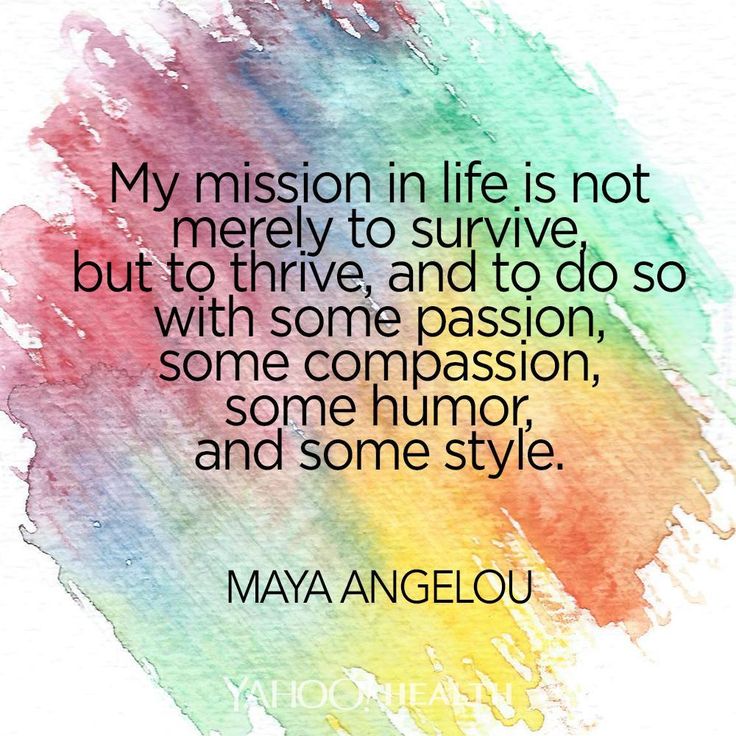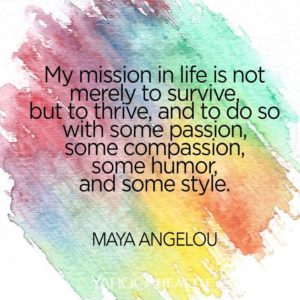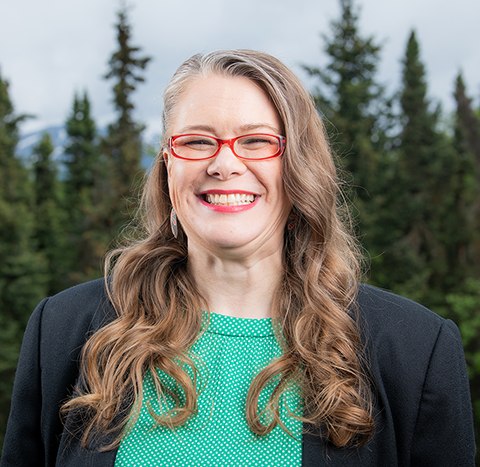Tonia A. Dousay
Scholar | Educator | Leader
A Lesson in Life, Love, & Humility

 The past nine months have brought about a great change in my life, and I’d like to think a great lesson in life, love, and humility. To share my story, though, I must rewind the clock almost 23 years to the Christmas of 1994. I had just finished my first semester of college and was home for break. I awoke in the early hours of the morning with a searing pain in my right side, calling out for my mom. We called the insurance nursing hotline who suspected appendicitis and instructed us to get to the nearest emergency room as soon as possible. Hours of testing and waiting ultimately led to an ambulance transport from our tiny town in East Texas to St. Joseph’s Hospital in Houston. Three days later, filled with barium enemas, ultrasounds, and daily blood draws, an OB/GYN was called in and immediately ruled the situation a fallopian infection with severe ovarian cysts on the opposite ovary. Very little information beyond this was shared. The one caution I was given outside of being at high risk for continued cysts was possible fertility issues due to scarring from the infection. Life slowly resumed to normal after the infection cleared, and I did experience a few problems over the years with cysts flaring up.
The past nine months have brought about a great change in my life, and I’d like to think a great lesson in life, love, and humility. To share my story, though, I must rewind the clock almost 23 years to the Christmas of 1994. I had just finished my first semester of college and was home for break. I awoke in the early hours of the morning with a searing pain in my right side, calling out for my mom. We called the insurance nursing hotline who suspected appendicitis and instructed us to get to the nearest emergency room as soon as possible. Hours of testing and waiting ultimately led to an ambulance transport from our tiny town in East Texas to St. Joseph’s Hospital in Houston. Three days later, filled with barium enemas, ultrasounds, and daily blood draws, an OB/GYN was called in and immediately ruled the situation a fallopian infection with severe ovarian cysts on the opposite ovary. Very little information beyond this was shared. The one caution I was given outside of being at high risk for continued cysts was possible fertility issues due to scarring from the infection. Life slowly resumed to normal after the infection cleared, and I did experience a few problems over the years with cysts flaring up.
Fast forward the clock to my senior year of college, and it’s now 1999. I had discovered the wonderfully affordable women’s care services of Planned Parenthood, and took advantage of being able to have an annual examination with a year’s worth of birth control pills for $5. While I was technically covered by my parent’s medical insurance, I would have to pay the office co-pay for the annual exam ($30) plus the monthly prescription, which wasn’t covered despite the insurance being Uniformed Services Family Health Plan (USFHP) for separated military. The plan itself was administered by a Catholic organization, and they refused to cover any form of birth control. The result was that I would have to pay $40 per month for pills. While I was under their insurance, I was more or less independent from my parents, paying all of my own bills and college tuition. I could spend $40 a month for birth control not covered under insurance or I could put that money towards my electricity bill and take advantage of Planned Parenthood’s outstanding healthcare services. It was with Planned Parenthood, at the ripe old age of 21, that I had my first abnormal pap smear. I was scared and frightened. They offered to refer me to a specialist or I could go to a USFHP approved doctor for follow-up. Thus began the emotional rollercoaster known as Human papillomavirus (HPV) and “mild dysplasia” with few answers provided afterwards.
Looking back, it’s amazing how much we’ve learned about HPV in such a relatively short time. Twenty years ago, I was told that it would likely have longterm fertility impacts, but we’d just have to monitor and wait and see. Then we started learning about the relationship between HPV and cervical cancer. Then we found a vaccine for HPV. In the interim, I’d been through more abnormal pap smears, colposcopies, and cryotherapy. Along the way, I also found a number of female friends who’d been through similar situations, some of whom went on to bear children. So, while the rollercoaster wasn’t enjoyable, I at least had good company and hope. For the most part, I simply, and foolishly, dismissed the situation as borderline normal. I never thought to connect the repeated abnormalities to the previous infection at 18 or the HPV diagnosis at 21.
Then, I finally found the partner of my dreams. I had fulfilled my goal of earning a doctorate degree, and it was finally time to try and conceive. For most of my life, I’ve always dreamed of being a mother. I was that neighborhood girl who babysat for everyone. I love being around children, and even daydreamed with one of my college boyfriends about the day we would be married and have children together; our first girl would be named “Rebekah.” My exhusband wasn’t terribly fond of the idea, but I somehow managed to convince him that we would be great parents. The opportunity never presented itself, however, before our relationship ended. Then, I was fortunate to later meet a man who is my match and would be an amazing father. Together, we had pledged not to stress about the process or go through infertility treatments if we ran into problems. We already knew from my past health issues that it might be a little tough. But, we agreed that whatever happened would happened. In hindsight, we had no way of predicting where the journey would lead. In the spring of 2013, I went off of birth control, and we let nature take its course. Three years and four miscarriages later, I was emotionally beaten. Nearing 40, I knew the clock was running out on me, and I really didn’t want to go down the IVF or surrogacy paths. Then another blow in the form of yet another abnormal pap smear came. This time, however, my doctor decided to look a little further. HPV reared its ugly head again, and we were all a little baffled. If I tested positive in 1999, why hadn’t I cleared the infection like most people? Why was it showing up again? More questions than answers presented themselves, and it was time for help.
Health care in Wyoming is a gamble on a good day. Depending on the source, we usually rank in the bottom 20% for quality and are one of the most expensive states for healthcare. Whether it’s through not attracting highly skilled and knowledgeable professionals or failure to retain these doctors, healthcare in our vast state leaves much to be desired. In fact, when I first moved to Laramie, many locals immediately told me that I should look to Colorado for these services. Few of my direct encounters with medical professionals in the state have resulted in any level of satisfaction. Few of these individuals seem genuinely interested in remaining current and relevant in their field. Conversations with my primary doctor (a physician assistant, P.A.), whom I adore and trust, and close friends in the medical field led me to the University of Colorado Anschutz Medical Campus and the Cancer Pavilion. From here, I discovered Dr. Saketh Guntupalli, an oncology gynecologist. You can search for him and find his medical profiles, but I was quite interested in his popsci writings, like this one for Forbes. Despite being a “Stage 0,” he agreed to take me as a patient.
After just an hour and a half in Dr. Guntupalli’s office, I suddenly found more clarity than I ever imagined. More than 20 years of questions and mysteries came together to form a pattern that actually made sense. Everything was connected, and it all came back to HPV. My history of repeated abnormal pap smears was rooted in my body’s inability to naturally clear the infection. The early infection at 18 was the first sign, but mistakingly overlooked and not connected. To complicate matters, I have a small uterus, and it did indeed have scar tissue, contributing to the miscarriages. Simply stated, carrying a pregnancy to term would be highly unlikely and I was in the 10% of the population at the highest risk to develop cervical cancer. I left his office in equal parts shock and relief.
But now what? I could try the HPV vaccine, but it wouldn’t be covered by insurance due to my age (40) and it only had a 40% efficacy for my age group. That might take care of the cancer risk, or it might not. I could do nothing and just continue to monitor my uterus and cervix health, awaiting the inevitable. Both of these options came with the constant reminder that another miscarriage was just around the corner. Alternately, I could opt for an early hysterectomy. It sounds drastic, and it is. Being a social science researcher and scholar in my own right, I turned to medical journals. I took the information that Dr. Guntupalli shared with me and started searching. I found the evidence to support what he’d told me, but I’d never have known to search for without the keywords. The facts laid out before me, I made the decision to proceed with the hysterectomy, knowing that it would forever alter my life and I would never be a natural mother.
I know that many of my friends and colleagues, some of whom are reading this, do not fully understand. This post is an attempt to help explain and bring closure to this part of my journey. If I haven’t been diagnosed with cancer yet, why would I put myself through such a procedure? If there’s still some slim chance at conceiving, why would I remove it from possibility? The answer is not simple, and yet, it is. Maya Angelou’s words say it best. I do not simply want to survive. I want to thrive. I want to carry on a legacy that will be felt for generations. I need my positive impact on this world to out live me. I can’t do that if I’m constantly worried about the next abnormal test result or dealing with the emotional turmoil of another lost pregnancy. By removing these complications from life, I am free to continuing giving my love to my students;
- graduate students at UW who take the occasional course with me
- “my” graduate students who work with me on research projects and who’ve asked for me to be their advisor
- graduate students from other disciplines and universities who turn to me for advice, guidance, and mentoring
- undergraduate students who pass through my classes
- undergraduate students who let me adopt them, like my sweet Megan who is my adopted daughter and whose own mother has trusted me with guiding her daughter through college
- K12 students who pass through my makerspace and elective classes
My students trust me teach them the knowledge and skills they need to succeed in school and life. They trust me to help them make sense of the shifting landscape of technology and learning in the 21st century. I take this trust very seriously.
Two years ago, I was sitting along the parade route with my husband and furry children (a Husky, Husky-Malamute, and Malamute-German Shepherd), waiting in anticipation for the start of Jubilee Days when a young family settled in next to us. It was a mother and her three little children, a girl and two boys. Within minutes, her youngest son, around 3, had wandered over to my seat and began asking me a variety of questions. Then he noticed that my shoes matched his socks. Our friendship was sealed. Before the start of the parade, he had climbed into my lap, and we were playing with the flowers growing on the ground around us and ready to squeal with delight at the horses and parade floats that passed by, celebrating our statehood. His mother was understandably concerned. I tried my best to allay her fears. I introduced myself and told her that I’m a faculty member at the University of Wyoming. I wanted her to feel at peace with her son’s affection towards me and not worry that I would somehow violate this trust. It just so happened that her brother then joined them, and I happen to know him; he works for Albany County Tourism and had been my point of contact when one of my graduate classes used their office as a client for a service-learning project. This little boy’s sweet and innocent attachment to me was (and still is) a treasured gift. To offer up affection freely and expect only the same in return is a rare wonder. I’d like to think that he saw the good in me, and I hope that I always project that goodness. I hope that my passion for teaching and compassion for others always shows.
As for the humor, well… If you’ve emailed my UW email this week or seen my last tweet, then you’ve seen a small glimpse of my sense of humor.
Your fun science fact of the day!
No, I’m not having all of my veins removed, but I am having surgery on Monday, March 20. And, I’m following the doctor’s orders (Dr. Mary Alice Bruce, that is, my awesome department chair) and using the week to recover. I promise to respond to your message, but it may take me an extra day or three.
Prior to my surgery, I nicknamed my uterus “Utie.” When we decided to follow the rising practice of removing the fallopian tubes while retaining the ovaries, I nicknamed them the “Tubettes.” The past month has been “Utie & the Tubettes farewell tour.” I did briefly toy with “Utie & the Tubefish,” but wasn’t sure how Darius Rucker might take that spin. 😂 I have a somewhat twisted and dark sense of humor. It helps me in times of true darkness. I love a good pun, and I sometimes laugh when it’s completely inappropriate. Thankfully, my closest friends, like my lady love Jenn, and my husband are right there with me.
Lastly, the style. I often joke that it took me 30 years to learn how to color outside the lines. Once I broke out of the box, well, good luck getting me back into it. I call myself “Willie Hippie,” in the tradition of Willie Nelson and his breed of 70s hippie that originated out of my home state of Texas. I’m a little bit hippie, a little bit mountain, and a whole lot of color. Just before my surgery, I posted this to Twitter:
I surround myself with color, because the world is simply too amazing to experience in black & white. pic.twitter.com/GUP60qJK8b
— Dr. Tonia A. Dousay (@tadousay) March 19, 2017
Life is too short to follow all of the rules. Sometimes, we have to do things a little differently in order to see the possibilities and learn the lessons.
If you’re squeamish or have issues with straight talk, you might want to skip to the last paragraph. The surgery itself went smoothly. I was released the same day, as promised, but could not have predicted the next 72 hours. I began vomiting in recovery and spent the last three days battling nausea intermittently with throwing up. Some of this was from the anesthesia. Some of this was from processing the gas they use to inflate the body during surgery. At times, I would have to work through breathing exercises you might see in a lamaze class (or pilates, in my case). While I felt the need to urinate, actually peeing was difficult. The muscles didn’t want to cooperate and when they did, I didn’t feel relief. The two hour ride home from the hospital was difficult. Soon after leaving, I felt the need to urinate so badly that I was in pain. Of course, it was rush hour traffic in Denver, and the E470 tollway isn’t exactly known for well-placed service stations. We made it to a gas station, where I could go and get water and Gas-X for the ride home to help. Somewhere around Ft. Collins, however, the vomiting started again. Thankfully, my mom and husband had asked the recovery nurse for extra bags before I was discharged. So, we were prepared. By the time we made it almost to the Colorado-Wyoming state line, however, I was nauseous again and really had to pee. That combination did not work out in my favor. I tried my best to clean up my messes, but the state of affairs would’ve been much worse without my wonderful husband and mother there to help me. Even once I got home, it took another three days before I would slowly return to “normal-ish.” I’ve gone back and forth with sleeping for a few hours at a time, fighting the nausea, and trying to eat. I’ve colored a little in the Pigment app. I’ve tried to look at a screen long enough to make sure my students are still on track for the semester. The last few days really have been a lesson in life, love, and humility.
